Volunteers plant a Pollinator Garden at Schmul Park
This fall, a new pollinator garden was planted at Schmul Park in the Travis neighborhood of Staten Island. Schmul Park was Freshkills Park’s first capital project, designed by James Corner Field Operations and completed in 2013. Schmul Park is also soon to become a neighborhood entrance to the 22 acre North Park Phase 1 which is under construction and scheduled to be complete in 2022. For more updates on North Park, click here.
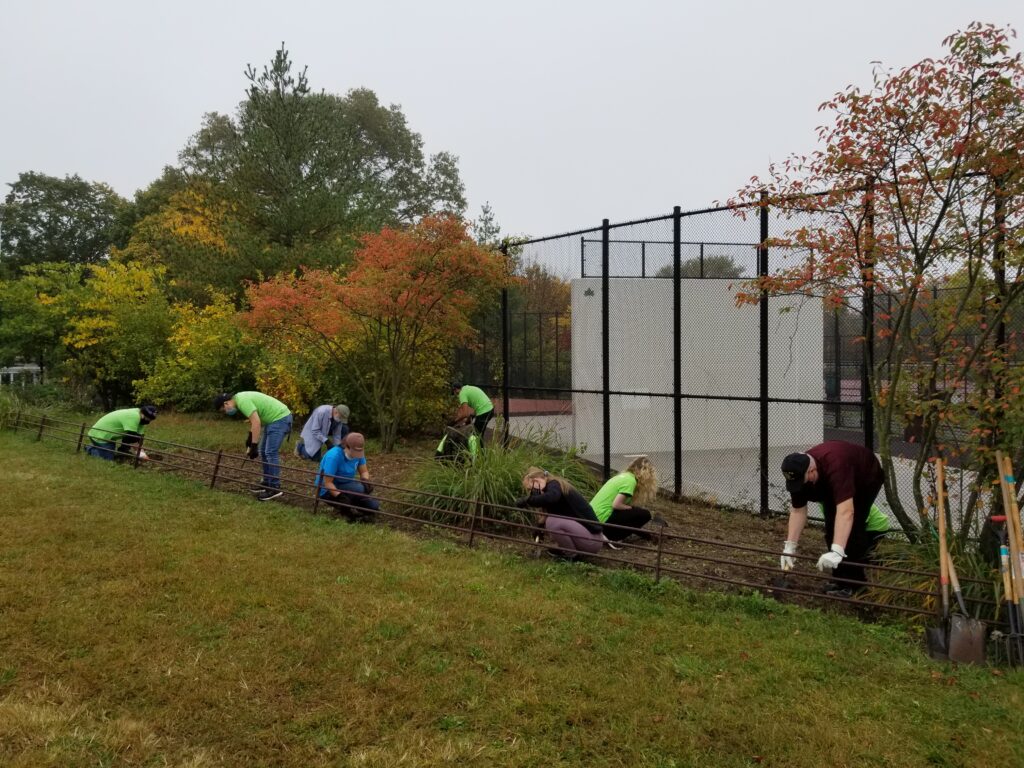
Volunteers Prep the Site on 10/23/20
The garden project took two days to complete with the help of over 30 volunteers: one day was needed to remove the invasive plants and one day was needed to plant the new native species. An energetic collective of NYC Department of Parks and Recreation staff, CSI Verrazano honors students, Travis community residents, and Freshkills Park supporters teamed up to remove over 20 bags of invasive species and plant 105 native species by the handball courts. The plants are dormant now but come spring, will bloom and transform the plant beds.
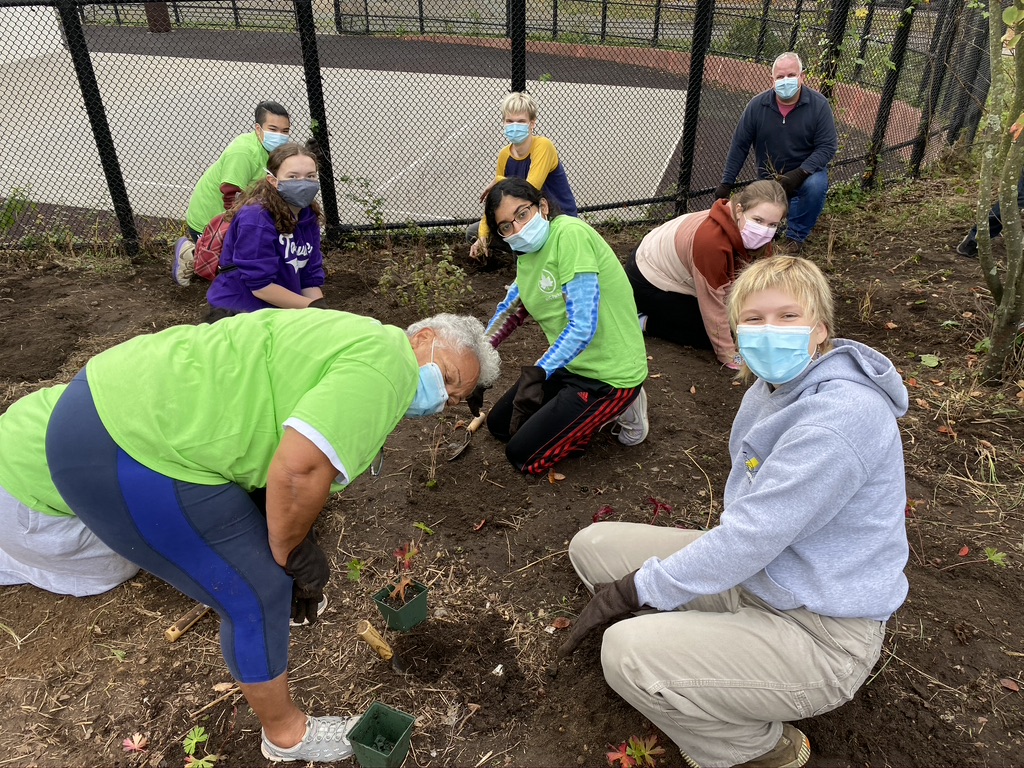
Volunteers Plant native species on 10/24
What is a Pollinator Garden?
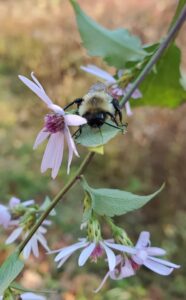
Bumblebee resting on an Aster
Pollinator gardens also go by the name of biodiversity gardens. These gardens are designed to be ecologically beneficial to pollinators and wildlife by including plant species native to the area. NYC Department of Parks and Recreation criteria require that a pollinator garden contain at least 60% species native to the New York City Region. Thirty percent should be native to the Northeast region, and can include native cultivars, known as “nativars”. In the simplest terms, a navitar is a cultivated plant that originated from a native species. Nativars, while easier to maintain, do not have all of the characteristics of the native plant and so do not necessarily provide the same ecological benefits. The remaining 10% of the plantings can be non-native and must be non-invasive.
Where did the plants come from?
The Greenbelt Native Plant Center (GNPC), less than a mile from Freshkills Park, supplied over 100 native species for the planting project at Schmul Park. Some of the grasses at Freshkills Park also came from the GNPC seed bank. The GNPC is the largest municipal native plant center in the United States and their mission is to preserve and provide native plants and seeds to support the restoration of natural areas.
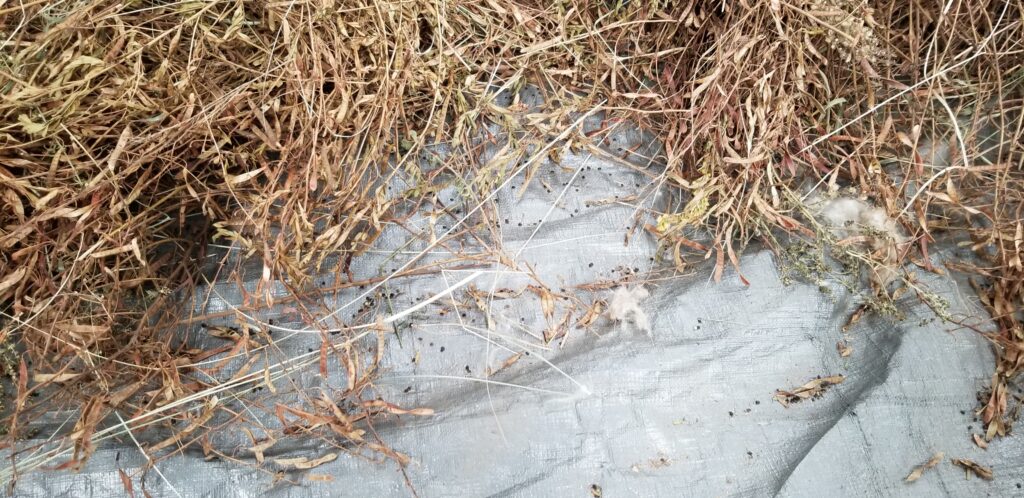
Grasses are laid out to collect the seeds that fall off.
Why plant native species over ornamental species?
Native species create ecologically beneficial and cost effective ecosystems. According the GNPC, “Our plants provide the greatest assurance of short–term establishment, long–term persistence, and ecological integration, and provide the most economically sound approach to restoration efforts. Local ecotypes that have evolved with local climatic, edaphic (soil), and environmental conditions are best adapted to those conditions and are most resistant to disease and insect attack.”

A grasshopper on a wild strawberry leaf
In contrast, ornamental species require more work to maintain and the insecticides and fertilizers necessary for their health can cause pollution. Ornamental species have been bred for desireable garden traits, like extended bloom and extra petals, and as a result, the ecological function of the plant is often lost. For example, double flowers (ornamental species cultivated to have more petals) which stay open longer, are often sterile or produce less food for pollinators. The mutation that creates extra petals comes at the cost of pollen-producing stamens. Further, those extra petals do not have pollinators in mind and they make any available nectar difficult or impossible for pollinators to access. According to Environemtnal Entomology, ornamental flowers only attract generalist (less picky) pollinators and not specialist (native) pollinators. Both generalist and specialist pollinators make up a sustainable pollinator community.
What has been planted at Schmul Park?
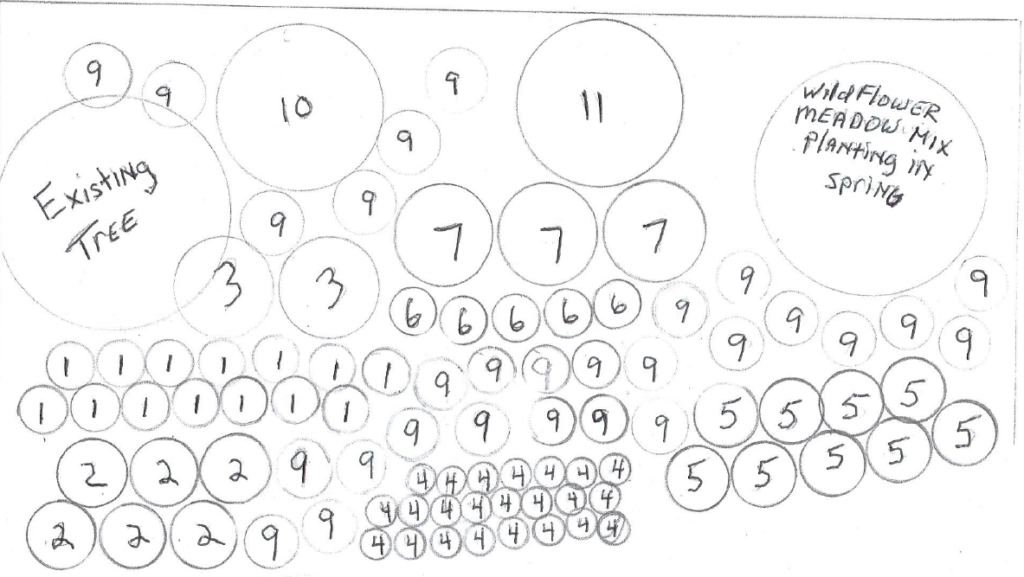
The Drafted Plan
The garden consists of:
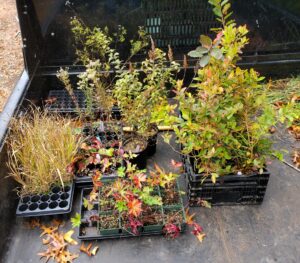 Virginia Mountain mint (Pycnanthemum virginianum)
Virginia Mountain mint (Pycnanthemum virginianum)- Black-Eyed susan (Rudbeckia hirtia)
- Black Highbush Blueberry ( Vaccinium Fuscaturn)
- Rose Moss (Portulaca grandiflora) * Not Native/Not planted
- Wild Geranium (Geranium maculatum)
- Hyssopleaf Thoroughwort (Eupatorium hyssopifolium)
- Wild Bergamot (Monarda fistulosa)
- Foxglove Beardtongue (Pestemon digitalis)
- Purple Lovegrass (Eragrostis spectabilis)
- Steeple Bush (Spiraea tomentosa)
- Nantucket juneberry (Amelanchier Nantucketensis)
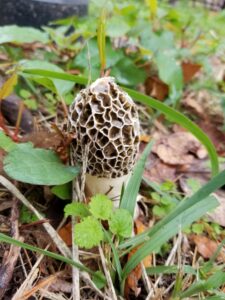 The species were chosen with respect to drought tolerance (to minimize maintenance), preferred light conditions (to ensure optimal growing conditions), and plant height (to maintain visibility). In addition, the flowers will bloom throughout the blooming season for consistent food for pollinators. The garden that was planted is young and will continue to grow and contribute to the ecological habitat at Schmul Park and the experience of its human visitors. As the garden fills out, you may notice a change in the wildlife during your visit next year.
The species were chosen with respect to drought tolerance (to minimize maintenance), preferred light conditions (to ensure optimal growing conditions), and plant height (to maintain visibility). In addition, the flowers will bloom throughout the blooming season for consistent food for pollinators. The garden that was planted is young and will continue to grow and contribute to the ecological habitat at Schmul Park and the experience of its human visitors. As the garden fills out, you may notice a change in the wildlife during your visit next year.

Volunteer with Freshkills next Spring!
NYC Parks will need help to maintain these new gardens. If you are interested in volunteering with us at Schmul Park, please sign up for our newsletter and watch for notifications next spring on social media @freshkillspark




